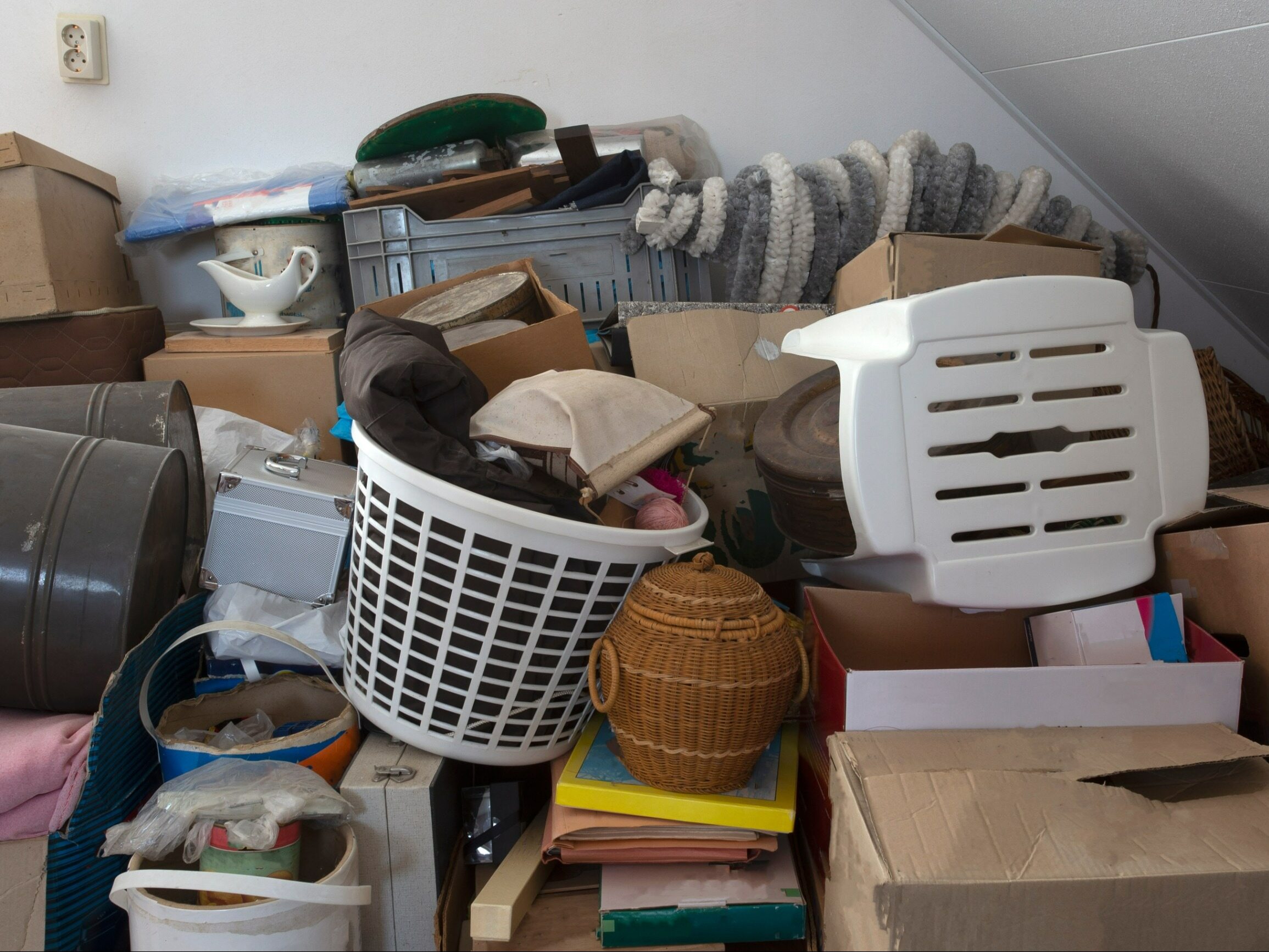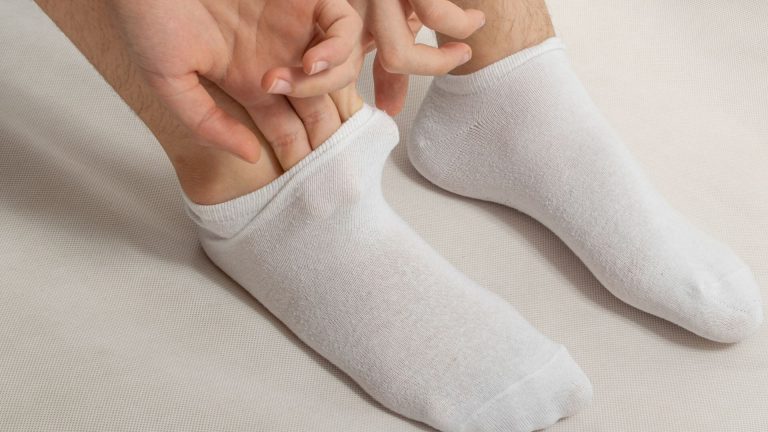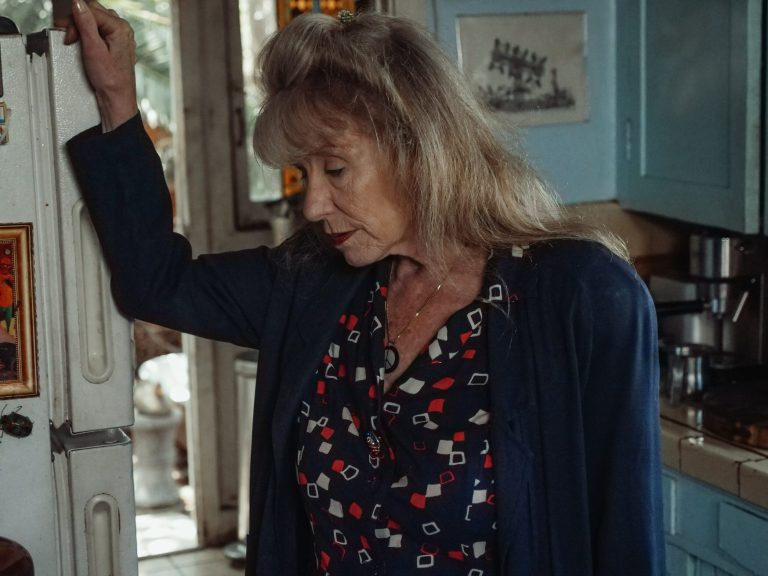Difficulty getting rid of unnecessary items may indicate a disorder. What is syllogomania?

Syllogomania, also known as pathological hoarding or hoarding syndrome, is a mental disorder involving excessive attachment to objects. A person suffering from it accumulates items that are of great value to them, although in reality they are, for example, garbage or unusable clothing, expired cosmetics or stale food. What are the causes of pathological hoarding? How to distinguish syllogomania from collecting or a sentimental approach to owned items and how to treat it? We explain.
- Syllogomania – basic information about pathological hoarding
- Causes of hoarding syndrome
- How does pathological hoarding manifest itself (syllogomania)?
- Syllogomania – treatment of pathological hoarding
Syllogomania is a serious problem not only for the person affected by this disorder, but also for their family members and neighbors. Accumulating things in the limited space of a house or apartment quickly gets out of the apparent control of a pathological collector, becoming the cause of many nuisances. Accumulating various items, packaging and food scraps attracts rodents and vermin and increases the risk of fire. Syllogomania requires appropriate treatment. It is often difficult to detect the moment when a person who was previously obsessed with collecting various items becomes a pathological collector.
Syllogomania – basic information about pathological hoarding
Syllogomania is classified as a group of mental disorders. According to the definition, pathological hoarding causes the acquisition of useless things and things of little value to other people, as well as difficulties in getting rid of the collected items. syllogomania limits living space – a person affected by pathological hoarding turns their house or apartment, as well as their immediate surroundings, into a repository of various objects, garbage and waste that are of great value to them. Trying to deprive a pathological hoarder of accumulated items causes sadness, fear and aggression.
Syllogomania causes disorganization of social and professional life or reduces their level, and also prevents normal functioning in private space – collected objects make it difficult to use furniture and move around rooms. People affected by pathological hoarding live in terrible conditions, among piles of garbage, waste, collected furniture, clothes and other items.
In some cases, pathological hoarding poses a threat to the health and life of the disturbed person, as well as those around him. Collected items may harbor bacteria and other microorganisms, as well as vermin and attract rats.
Causes of hoarding syndrome
Pathological hoarding is often associated with other mental disorders, such as obsessive-compulsive disorder, affective disorders, anxiety disorders and depression. The causes of pathological hoarding may be different (e.g. childhood trauma, low self-esteem and problems with making decisions). It is worth knowing that syllogomania can be caused, for example, by the death of a loved one – people suffering from loss improve their well-being by accumulating various objects. People suffering from hoarding disorder also collect useful things, but they buy them in too large quantities, which means they are unable to use them (e.g. cosmetics, food, clothing) and often justify their behavior with a bargain price or stocking up “for a rainy day”. “.
Pathological hoarding causes chronic difficulties in everyday life, becoming the cause of conflicts and dangerous situations, especially if a person who lives in a multi-apartment building suffers from hoarding syndrome and begins to make the lives of neighbors difficult. The accumulation of objects and the inability to keep private space tidy cause an unpleasant stench and an epidemic threat. The problem increases when a person suffering from syllogomania loses his job and cannot meet his basic needs. In such a situation, collecting more things (e.g. from garbage containers) brings temporary relief, allowing you to forget about your problems.
How does pathological hoarding manifest itself (syllogomania)?
The symptoms of pathological hoarding are not difficult to recognize. They can be easily distinguished from collecting, which is considered a passion and involves collecting items from a given category or era that are kept in proper order.
In the case of pathological hoarding, we are dealing with erroneous beliefs about unnecessary and worthless things that people without mental disorders regularly remove from their surroundings (e.g. empty cans, cardboard packaging, plastic bottles, damaged clothing). A special type of syllogomania is adopting animalsmost often stray dogs, despite the lack of housing conditions and financial resources necessary to maintain them and provide appropriate veterinary care.
The following symptoms indicate pathological hoarding:
-
collecting items of various value and utility in excessive quantities and in a chaotic manner;
-
difficulty getting rid of things, organizing living space and keeping order;
-
strong resistance to throwing away unnecessary items;
-
feeling guilty, anxious or sad when trying to get rid of things;
-
avoiding social gatherings in one’s home due to shame or fear of criticism;
-
problems with performing everyday activities (cooking, sleeping, maintaining personal hygiene);
-
obsessive thoughts about things and their meaning;
-
excessive attachment to things for a specific reason (e.g. sentimental reasons, sense of security).
Syllogomania manifests itself in a strong need to keep property, making everyday functioning of the sick person and those around him difficult. In extreme cases of pathological hoarding, a person affected by this disorder may pose a threat to the environment.
Syllogomania – treatment of pathological hoarding
Treatment of pathological hoarding is difficult and requires the involvement of the patient and his environment. The most effective method of treating pathological hoarding is cognitive-behavioral psychotherapy, which helps to change false beliefs and habits regarding things and learn to deal with negative emotions. Pharmacological treatment may be used as an adjunct to therapy to alleviate symptoms associated with mental disorders (e.g. anxiety, depression). In some cases, psychiatric treatment is necessary.
Pathological hoarding is a serious problem. Therefore, it is important not to underestimate this phenomenon and seek help from specialists. It is important to remember that a pathological hoarder is a sick person who acts in a certain way, not because of malice, but because of a distorted perception of reality.
Sources:
-
Agnieszka Księżopolska, Sławomira Kotapka-Minc, Pathological hoarding, Postępy Psychiatrii i Neurologi, 14, 1/20, pp. 107-110, 2005
-
Senger Michał, Doruch Patrycja, Rogacka Karolina, Kędziora-Kornatowska Kornelia, Symptoms of pathological hoarding in selected mental disorders. Review of therapeutic options, Journal of Education, Health and Sport, 12(6), pp. 51-60, 2022
-
Hanna Mamzer, Animal hoarding: human health and animal health, Życie Weterynaryczne, 97(10), pp. 649-654, 2022
-
P. Gałecki, A. Szulc, Psychiatry, Volume 1-2, Wydawnictwo Edra Urban & Partner, Wrocław, 2023
-
P. Gałecki, A. Szulc, Mental State Examination Diagnosis According to ICD-11, Edra Urban & Partner Publishing House, Wrocław, 2022






